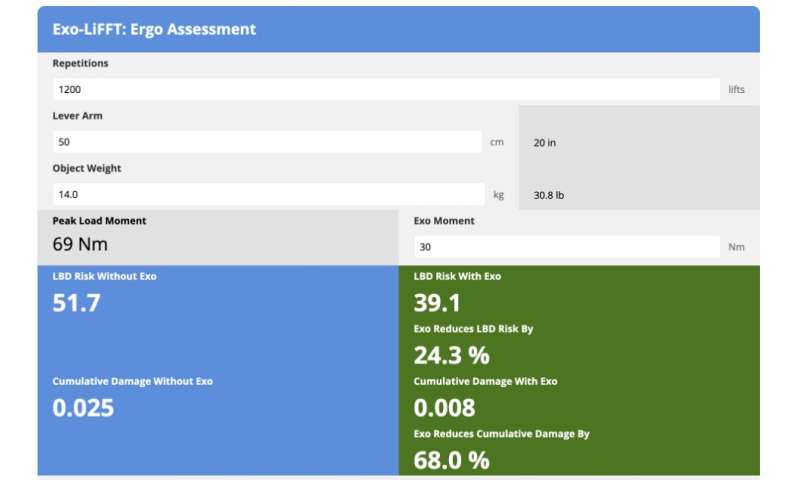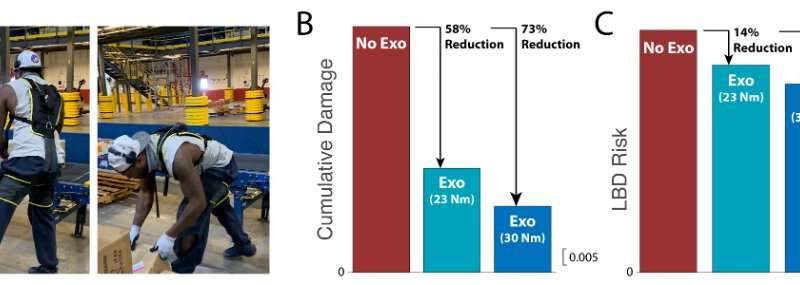
A study led by researchers from Vanderbilt University’s Center for Rehabilitation Engineering and Assistive Technology reveals a breakthrough tool to assess the effect of exoskeletons on injury risk.
The tool, called Exo-LiFFT, is an interactive calculator that will help companies looking for ways to overcome workforces struggling with musculoskeletal injuries, missed work, and accelerated retirement amongst skilled laborers.
The study’s lead author, Karl Zelik, associate professor of mechanical engineering, said this is a major leap forward to help bring relief to overburdened workers.
The study was published online this month in the Journal of Applied Ergonomics, and projected that exoskeletons have the potential to reduce workplace back injuries in material handling by 20% to 60%. This is a critical advancement because work-related injuries to overburdened workers are a major factor contributing to the current dynamics in the labor market.
“If we can identify the right places to deploy exoskeletons, then they can reduce injury risks as well as bodily discomfort, which impacts workers on the job and at home. Exoskeletons may also help improve worker recruitment and retention, which have been costly pain points for employers amidst the labor shortage,” said Zelik, who also is the Chief Scientific Officer at Nashville-based workforce wearable company HeroWear.

Zelik and Ph.D. student Cameron Nurse represented Vanderbilt on the six-person research team, which also featured industrial engineers from Auburn University and an ergonomist from HeroWear. Auburn previously developed foundational ergonomic risk assessment tools, while Vanderbilt and HeroWear have been deeply involved in exoskeleton research, design and translation, as well as the development of industry exoskeleton standards with members of the ASTM International standards committee, which includes companies like Boeing.
“We’ve been exploring exoskeletons at Boeing for the last few years, with encouraging results to date,” said Christopher Reid, Associate Technical Fellow of Human Factors and Ergonomics at Boeing. “It’s incredibly important and encouraging to see academia and industry coming together to develop practical risk assessment tools that can help identify and leverage the benefits of emerging safety technologies like exoskeletons.”
Overexertion is a primary source of lower back pain and injury, which accounts for 38.5% of work-related musculoskeletal disorders, according to the U.S. Bureau of Labor Statistics. Exoskeletons are now being used daily in factories, warehouses, construction sites, and other workplaces around the world to relieve physical strain on overburdened workers.
“At Toyota, we have relied heavily on new ergonomic assessment tools to support our teams in identifying processes on our manufacturing lines that would benefit from shoulder exoskeletons being deployed as personal protective equipment,” said Aaron Sparks, safety project engineer at Toyota North America. “As we begin to investigate and deploy back exoskeletons, it’s incredibly exciting, and a major relief, to see similar tools being developed to support with the identification and deployment.”

Exo-LiFFT empowers safety professionals and researchers to quickly and easily assess the effect of exoskeletons on back injury risk without the need for costly and time-consuming experiments. This reduces biomechanical assessment time for back exoskeletons from months down to minutes, and provides an evidence-based way to estimate injury risk reduction.
Source: Read Full Article
